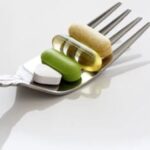Antioxidants provide added health insurance and sometimes years to women’s lives. Every woman should heed these top ten antioxidant suggestions, because they can save your life and help with aging.
Health and aging issues are among many things about which women worry. Now a slight change in your diet can help combat both health and aging worries.
Antioxidant One: Vitamin A
Vitamin a is a retinol that the body converts to help in the aid of one’s eyesight. When a deficiency of vitamin A happens in the body, it can lead to night blindness. For those who have a problem with night blindness, vitamin A deficiency is the reason for it.
Vitamin A Food Sources: Vitamin A is most commonly found in egg yolks, cream, and butter.
Antioxidant Two: Beta Carotene
Beta Carotene helps protect the cells against cancer and can promote healthy eyesight. Sometimes where people have eaten to many foods high in beta carotene, their skin has turned a shade of orange. They see this occasionally in infants. However, this condition is reversible.
Beta Carotene Sources: Cantaloupes, apricots, leafy green vegetables, carrots, sweet potatoes, and spinach are foods that are high in beta carotene.
Antioxidant Three: Vitamin D
Vitamin D can help promote health teeth and bones. Vitamin D deficiencies can lead to brittle bones, breakage, and osteoporosis. Vitamin D also helps promote strong muscles.
Vitamin D Sources: Sunshine is one source of Vitamin D. NOTE: Remember to much sunshine can cause skin cancer, please use it in moderation. Vitamin D supplements are another source to maintain the daily dose of 1,000 Ius a day for a safe amount of Vitamin D. While some foods, such as milk, that has Vitamin D in it, but they are not your best source for this vitamin. Food sources to help with Vitamin D intake are milk, eggs, cheese, yogurt, salmon, margarine (in moderation of course), cereals, tuna, catfish, and sardines.
Antioxidant Four: Omega-3 Fatty Acids
Omega-3 fatty acids can aid in the lowering of cholesterol. Omega-3 fatty acids also help lower high blood pressure. By using Omega-3 fatty acids either from foods or dietary supplements can help decrease high cholesterol and blood pressure.
Omega-3 fatty Acid Sources: The following foods have Omega-3 fatty acids. These foods are fish, nuts, seeds and vegetable oils. NOTE: Not all of the items in any of these food categories contain Omega-3 fatty acids.
Antioxidant Five: Vitamin C
Vitamin C helps in fighting colds, cancer, lowering heart disease, cancer, and aging. Vitamin C can also help reduce stress. 1,000 IU of Vitamin C is the daily recommended dose.
Vitamin C Sources: Sources for the daily recommended amount of Vitamin C through supplements, vegetables and fruits which are uncooked, citrus fruits, green and red peppers, strawberries, broccoli, cantaloupe, papaya, parsley, asparagus, and tomatoes.
Antioxidant Six: Vitamin E
In some instances, women who have gone through menopause have found taking the daily amount, 400 IU, has helped with hot flashes. Also, higher doses of Vitamin E above the daily recommended use can cause heart disease risks. Vitamin E is also a great antioxidant for keeping the oxygen flow to the brain and its activity at its peak levels.
Vitamin E Sources: Supplements are one source of Vitamin E. Other sources are in grains, whole grains, nuts, leafy green vegetables, and vegetable oils. Be sure to store all foods in air tight containers to ensure Vitamin E is maintained in them.
Antioxidant Seven: Resveratrol
Resveratrol is an anti-inflammatory and antioxidant that can be found in red wine. This particular antioxidant had been found to lower the risks of heart disease, blood clots, lowering cholesterol, and cancer. While there isn’t much more information about this antioxidant, it has been proven with what has been studied, resveratrol does have its benefits.
Resveratrol Sources: Resveratrol can be found in red wine, peanuts, purple grape juice, purple and red grapes, skins, stems, and leaves of grapes.
Antioxidant Eight: Grape Seed Extract
Grape seed extract can help relieve symptoms of varicose veins, poor circulation, macular degeneration, and a few other circulatory issues. Grape seed extract can also help with blood supply to the skin.
Grape seed extract can also help with skin tone and fine wrinkles. Grape seed extract can be found in many of the over-the-counter anti-aging lotions. For three weeks, it is recommended that 75 to 300 milligrams be taken daily. However, after the three week period, it should be taken daily at a dose of 40 to 100 milligrams.
Grape Seed Extract Sources: Over-the-counter anti-aging lotions, grape seed extract (which can be found in many health food stores and some pharmacies, and seeded grapes. With the seeded grapes, the darker the skin of the grape the greater advantage you have with additional antioxidants.
Antioxidant Nine: Ellagic Acid
Ellagic Acid is an important cancer fighting antioxidants around. Ellagic Acid also promotes cell death of cancer cells while not harming the healthy cells. This acid may help reduce birth defects, speed up the process of healing wounds, and fight heart diseases.
Ellagic Acid Sources: Blueberries, pomegranate, red raspberries, walnuts, and strawberries are sources for the ellagic acid antioxidant.
Antioxidant Ten: Glutathione
Glutathione could help boost the immune system and help the liver remove toxins from the body. It also aides in regulating and regenerating the immune cells and a detoxifying agent for the body. When lower levels of glutathione are present in the body, it can cause problems with cardiac disease, immune and hepatic dysfunction, death, or premature aging.
Glutathione Sources: Asparagus, avocados, goat’s milk, parsley, broccoli, and whey protein are sources of glutathione.


